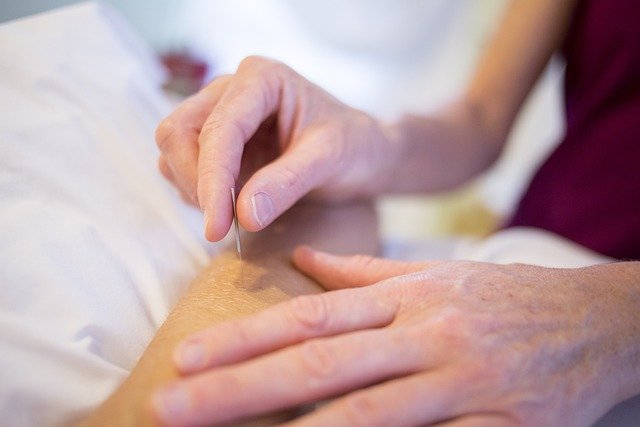Chronopuncture: Aligning Acupuncture with Your Body Clock
The ancient practice of acupuncture meets modern chronobiology in a groundbreaking approach to holistic healing. But what exactly is chronopuncture, and how does it promise to revolutionize our understanding of traditional Chinese medicine? Could this innovative technique be the key to unlocking optimal health by harmonizing our internal rhythms with targeted acupuncture treatments?

The Foundations of Chronopuncture
Chronopuncture builds upon the ancient wisdom of Traditional Chinese Medicine (TCM) and the modern understanding of circadian rhythms. In TCM, the body’s energy, or qi, is believed to flow through specific meridians at different times of the day. This concept aligns remarkably well with contemporary chronobiology, which has identified distinct patterns in hormone production, organ function, and cellular activity throughout the 24-hour cycle.
The practice of chronopuncture seeks to integrate these two bodies of knowledge, creating a synergistic approach to healing. By carefully timing acupuncture treatments to coincide with the body’s natural rhythms, practitioners aim to enhance the flow of qi and optimize the body’s innate healing capabilities.
The Science Behind Timing
Recent studies in chronobiology have revealed that our bodies operate on a complex system of internal clocks. These clocks regulate various physiological processes, from hormone production to immune function, and even pain perception. By understanding these temporal patterns, chronopuncture practitioners can target specific acupoints at optimal times to achieve the best possible outcomes.
For example, research has shown that cortisol levels typically peak in the early morning, while melatonin production increases in the evening. By aligning acupuncture treatments with these hormonal fluctuations, chronopuncture may be able to more effectively address issues related to stress, sleep, and overall well-being.
Tailoring Treatments to Individual Rhythms
One of the most intriguing aspects of chronopuncture is its potential for personalization. While general circadian patterns apply to most people, individual variations exist. Factors such as age, lifestyle, and even genetic predispositions can influence a person’s unique biological rhythms.
Chronopuncture practitioners use various methods to assess an individual’s circadian profile, including questionnaires, wearable technology, and even genetic testing. This information allows them to create highly personalized treatment plans that align with each patient’s specific biological rhythms, potentially enhancing the efficacy of the acupuncture treatments.
Applications and Potential Benefits
The potential applications of chronopuncture are vast and varied. Preliminary research suggests that this time-based approach may be particularly effective in addressing:
-
Sleep disorders: By targeting acupoints associated with sleep-wake cycles at specific times, chronopuncture may help regulate sleep patterns more effectively than traditional acupuncture alone.
-
Pain management: Studies have shown that pain perception varies throughout the day. Chronopuncture aims to capitalize on these fluctuations to provide more targeted pain relief.
-
Hormonal imbalances: By synchronizing treatments with natural hormonal rhythms, chronopuncture may offer a more nuanced approach to addressing hormonal issues.
-
Digestive disorders: The digestive system follows distinct circadian patterns. Chronopuncture techniques tailored to these rhythms may improve gastrointestinal health more effectively.
-
Stress and anxiety: By aligning treatments with the body’s natural stress response cycles, chronopuncture may offer enhanced relief from anxiety and stress-related symptoms.
Challenges and Future Directions
While chronopuncture shows promise, it is still an emerging field with several challenges to overcome. More rigorous scientific studies are needed to fully validate its effectiveness and establish standardized protocols. Additionally, the complex nature of individual circadian rhythms means that developing truly personalized treatment plans may require sophisticated tracking and analysis tools.
Despite these challenges, the potential of chronopuncture to enhance the already substantial benefits of traditional acupuncture is exciting. As research in chronobiology continues to advance, we can expect to see further refinements and applications of this innovative approach to holistic healing.
Fascinating Facts About Chronobiology and Acupuncture
-
The Nobel Prize in Physiology or Medicine was awarded in 2017 for discoveries of molecular mechanisms controlling circadian rhythms.
-
Traditional Chinese Medicine identified 12 primary meridians, each associated with a two-hour period of peak activity during the 24-hour cycle.
-
Studies have shown that the effectiveness of certain medications can vary depending on the time of day they are administered.
-
Acupuncture has been shown to influence the expression of clock genes, which are crucial in regulating circadian rhythms.
-
The concept of organ-specific peak times in TCM aligns surprisingly well with modern chronobiological findings on organ function.
As we continue to unravel the complex interplay between our internal clocks and overall health, chronopuncture stands at the forefront of integrative medicine. By marrying ancient wisdom with cutting-edge science, this innovative approach offers a promising path toward more effective, personalized, and holistic healing. As research progresses and techniques are refined, chronopuncture may well become a cornerstone of future healthcare practices, offering a harmonious blend of tradition and innovation in the pursuit of optimal well-being.





